Active Adventures In New Zealand
Outdoor and active adventures on New Zealand's North & South Islands
New Zealand must be in contention for title of adventure travel capital of the world.
The list of white-knuckle thrills you can seek out here knows no bounds. New Zealand has some of the world's best sky diving, bungee jumping, mountain biking and whitewater rafting, plus plenty of softer activities; hiking, kayaking and road biking.
With such a highly-developed adventure travel industry it's no wonder that people flock here from around the world to get their kicks.
Raring to go? Here's just a handful of the best active adventures in New Zealand.
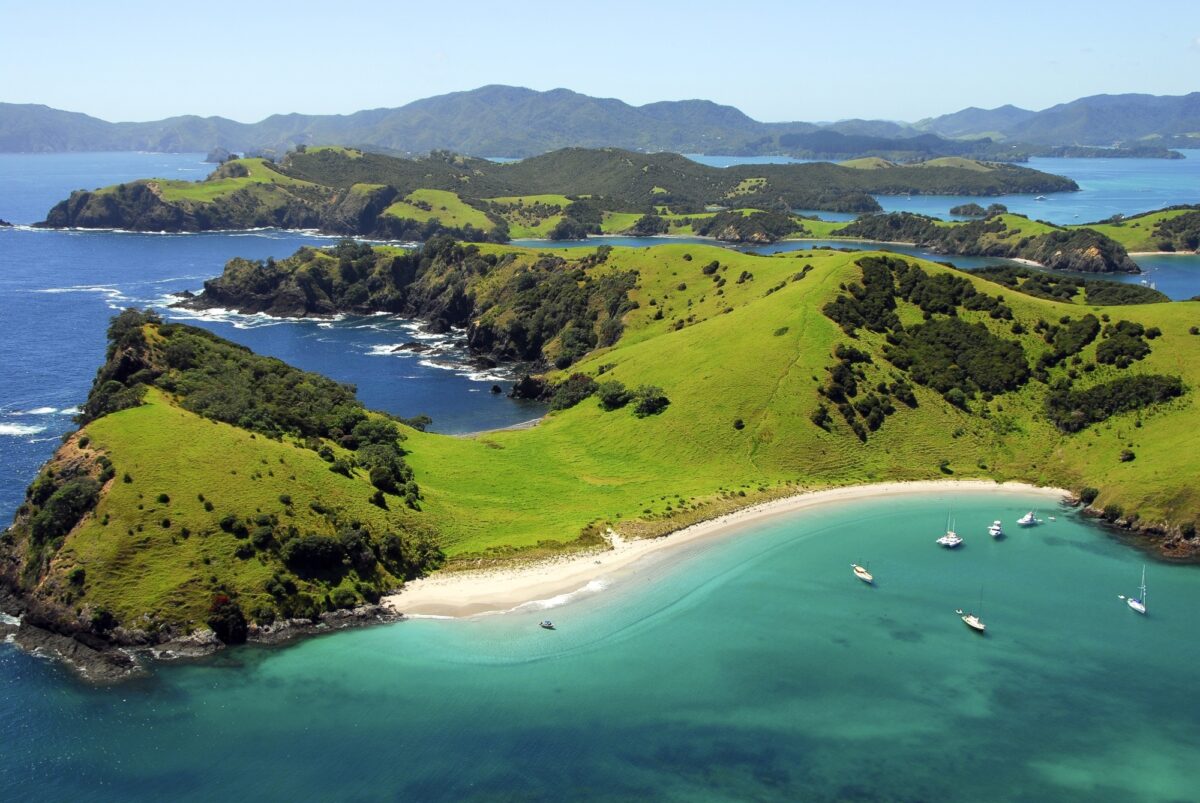
Aerial view of Waewaetorea Island, Bay of Islands, Northland, North Island
featured trips
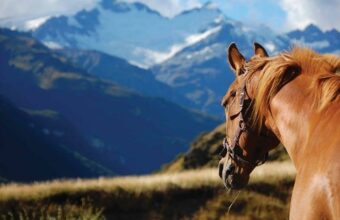
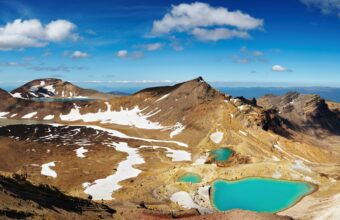
North Island Adventure
Road trip through New Zealand's North Island
7 days From NZ$1,329 pp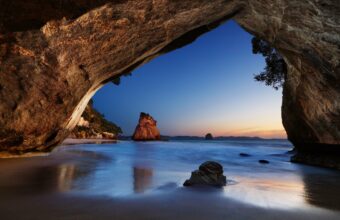
Northern Trail
Maori culture, beautiful landscapes and the best of the North Island
10 days From NZ$3,039 pp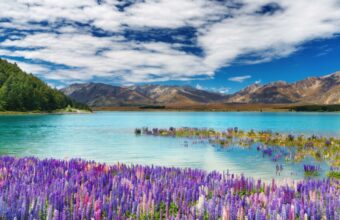
South Island Lick
Mountains, glaciers and the adventure capital of the world
7 days From NZ$1,259 pp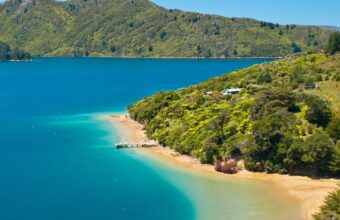
New Zealand Wanderer
The best of the north with a taste of the south
12 days From NZ$3,609 pp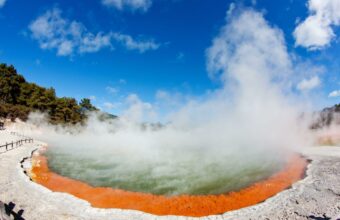
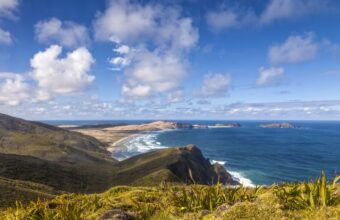
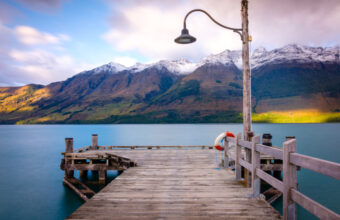
New Zealand Uncovered
Explore everything New Zealand has to offer
20 days From NZ$6,174 ppNew Zealand's best active adventures
Outdoor activities in New Zealand
While the North Island is probably best known for bustling cities like Auckland, Hamilton and Wellington, there’s still plenty to explore if adventure runs through your veins. Thanks to its near-tropical climate in summer, the North Island is the perfect place to get acquainted (or reignite a long-term love) with water activities.
Meanwhile, home to just one million people, New Zealand’s rugged South Islands is the perfect place to escape crowds and get some adventure. From epic walks to beautiful beaches, mountains and lakes, this is prime wilderness. New Zealand’s South Island has hiking trails that cover the most stunning scenery in the country, with an extra pinch of adrenaline and adventure.
Here's some of the best active adventures on New Zealand's North and South Island.
Kayaking & rafting on the Bay of Islands
If you’re arriving for a New Zealand summer (December-February), head straight to the far north and the Bay of Islands. This untouched enclave encompasses more than 140 subtropical islands off the north-east coast of New Zealand’s North Island. While its pristine beaches, big-game fishing and Maori cultural artefacts draw in visitors, more adventurous types can look forward to taking to the water to explore the Bay.
Sea kayaking is one of the best ways to see all the Bay of Islands’ coast has to offer. Novices can take a single day or multi-day tours that range from a leisurely little cruise to a tucked-away cove or an action-packed trip exploring some of the Bay’s many hidden caves, tunnels and rock gardens.
The waters around the Bay are suitable for all abilities, but if you’re keen to push the boundaries and really traverse the coastline with paddle-power alone, you can join a sea kayaking expedition tour. Ranging from 5-9 days at sea, kayakers can experience some of New Zealand’s most isolated wonders like the Great Barrier Island, located in the Hauraki Gulf — a 4-5 hour ferry ride from Auckland. Hauraki is one of New Zealand’s most unsung wilderness areas. Expect a paradise of thick forests, labyrinthine coastline and craggy peaks along the coast.
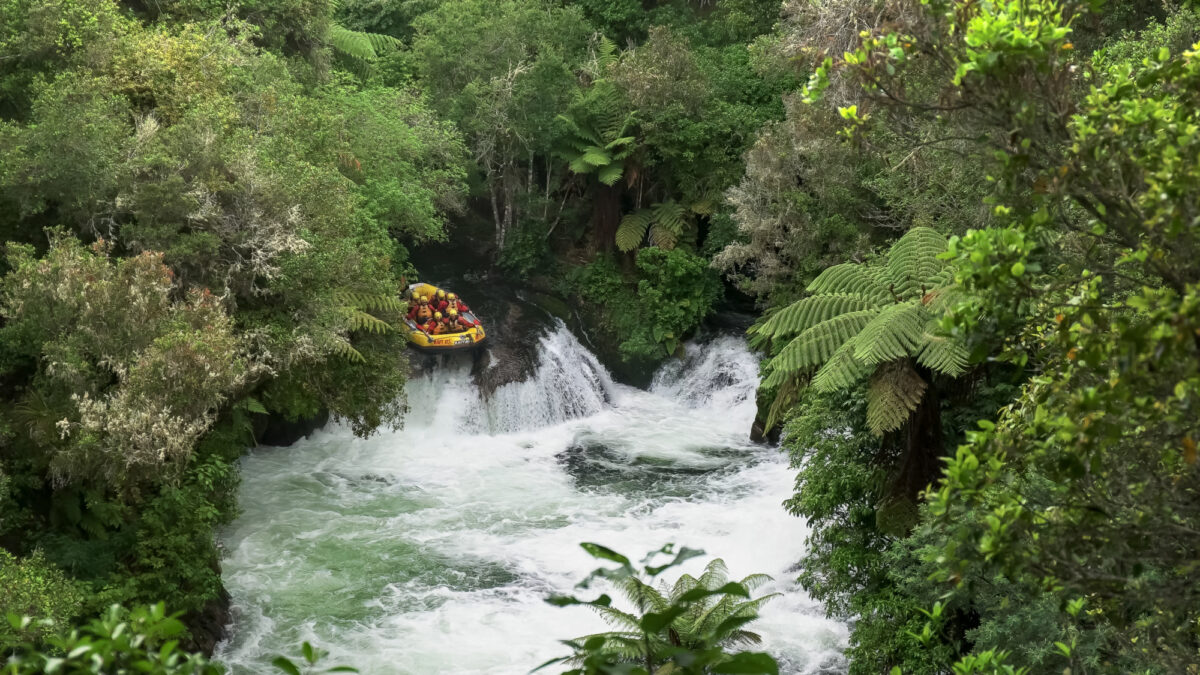
Whitewater rafting at Kaituna Falls, near Rotorua, North Island
White-water rafting on the Kaituna River
White-water rafting on the Kaituna River, near Tauranga and a short drive from the Rotorua, is the perfect way to get your adrenaline running. With a level 5 rafting trail — the highest grade available to the public in the world — this is a white knuckle affair as rafters race down the river before being launched over a 7m waterfall (which is one of three on the trail). However, if you’re after slightly less hectic thrills, there are several beginner to intermediate rafting trails at Kaituna, alongside a three-hour river-sledging tour. Here, adventurers don a specially designed bodyboard and flippers, propelling themselves down the river, over waterfalls and beside beautiful scenery.
While at Kaituna River make sure to explore the Maori history behind the river and the surrounding bushland. The traditional Maori name for Kaituna River is Okere River, which means the ‘place of drifting’. The initial 10km stretch of the Kaituna is still referred to as Okere River and is a site of special importance to the Maori. The river name ‘Kaituna’ literally translates as ‘food eels’. Below the river’s four main waterfalls are numerous eel holes, and whitebait and crayfish are also found.
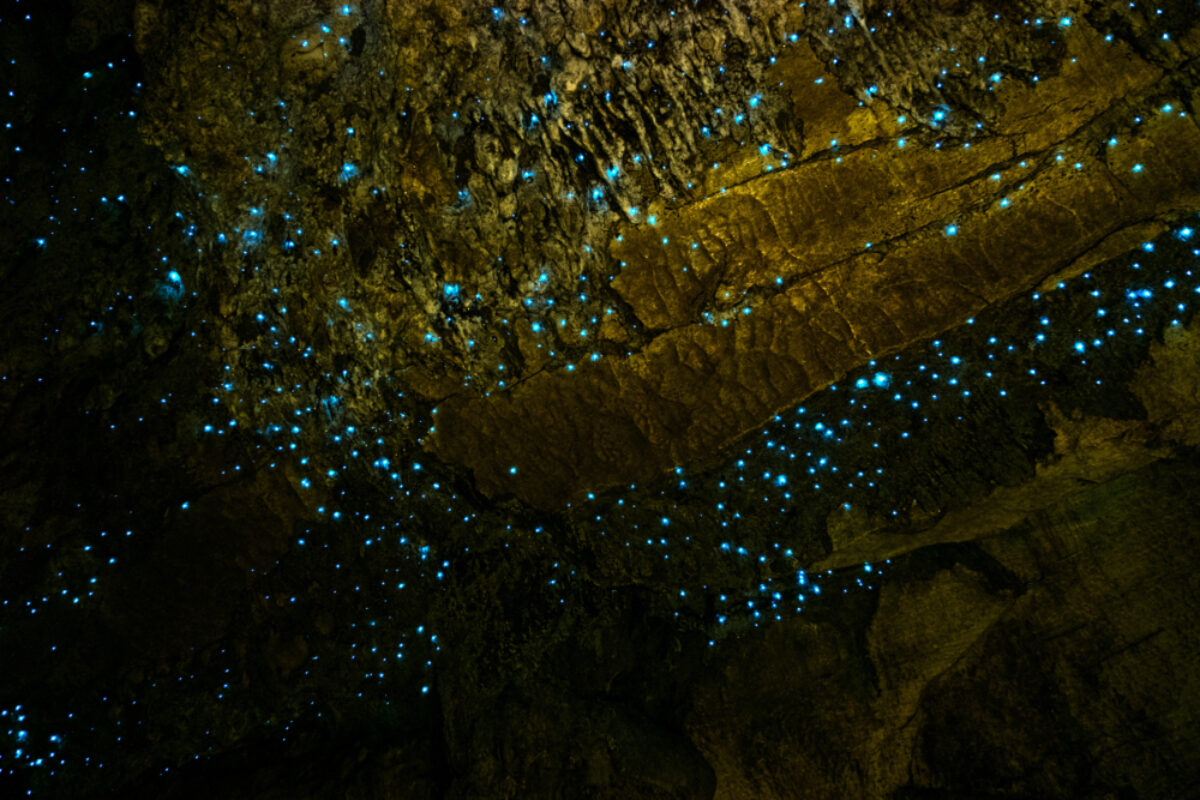
The glowworms of the Waitomo Caves, North Island
Rafting at the Waitomo Caves
If all that open water hasn’t satisfied you, head to the Waitomo Caves in the heart of the North Island. Most tourists visit the Waitomo Caves to catch a glimpse of the glow-worms — a spellbinding experience. Waitomo’s resident glow worms (Arachnocampa Luminosa) are unique to New Zealand and thousands of these tiny creatures radiate their luminescent light in an otherwise pitch dark underworld. Insects are attracted to the light the worms give off, becoming entangled in their threads and providing an easy meal. The brighter the light, the hungrier the worm. Guided tours of glow-worm cave and other sites — including Ruakuri Cave which is home to a Maori burial site — are available.
Waitomo’s caves also provide plenty of adventures, from caving to the ominously named black water rafting. This involves donning a wetsuit and travelling through Waitomo’s Caves on an inflatable tube for buoyancy, jumping off waterfalls and floating through long, glow-worm filled passages. Some tours also include high wiring and some climbing.
If you’d rather stay dry while exploring New Zealand’s North Island, there are plenty of hiking (called “tramping” locally) trails across the whole island.
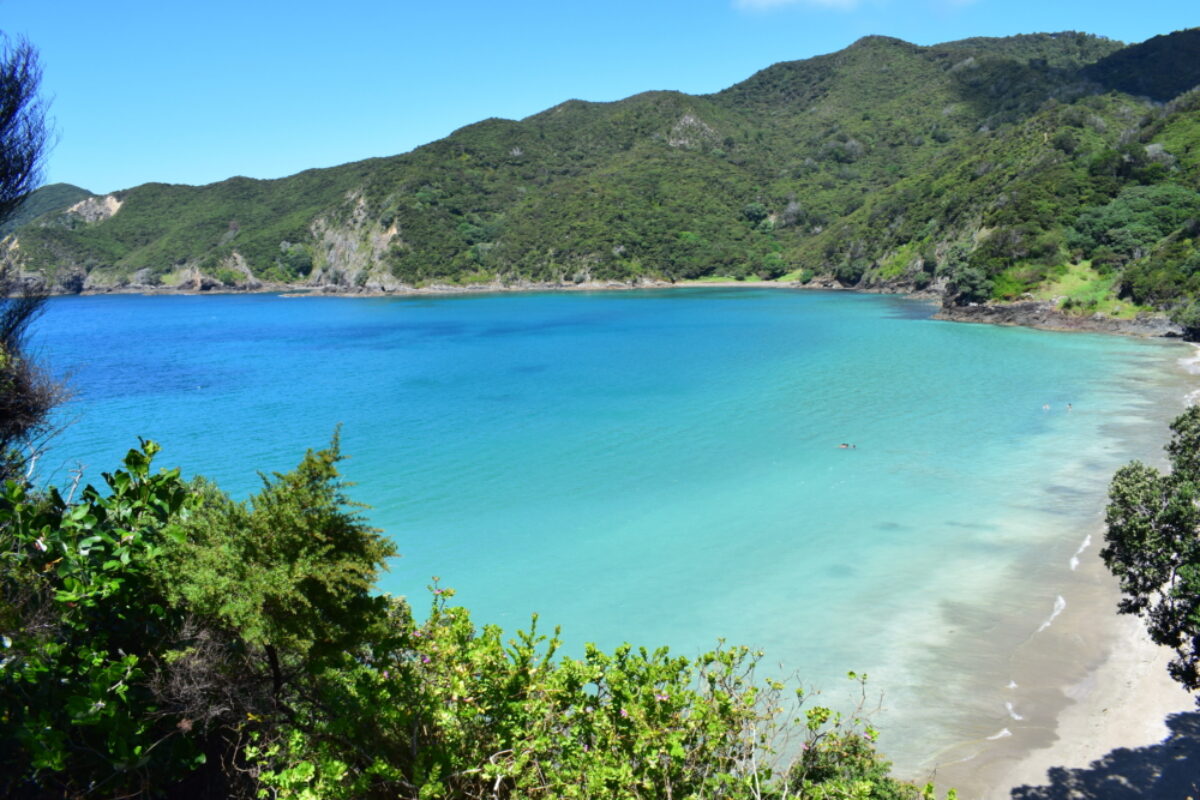
The Cape Brett Walkway starts at Oke Bay, near Rawhiti, Northland, North island
Hiking Cape Brett Walkway
New Zealand’s rugged Northland is home to the Cape Brett Walkway, which allows you to experience the coast while staying on dry land. This 20km hike starts at Oke Bay in Rawhiti, Bay of Islands, before winding through native bush, with many bluff peaks and steep cliffs. But with one eye constantly on the stunning ocean and island views, the Cape Brett Walkway is one of the most challenging — but rewarding — coastal paths in the area. If you feel like adding even more to the hike, take an one hour side track down to Deep Water Cove, where you can swim and snorkel.
Taking approximately eight hours to complete, you’ll finish this day walk at the iconic lighthouse (which is now a Department of Conservation Hut). Here, you can decide to camp overnight and walk back the route you came the next day, or if you’re pressed for time, you can get a boat to pick you up and return you to Oke Bay.
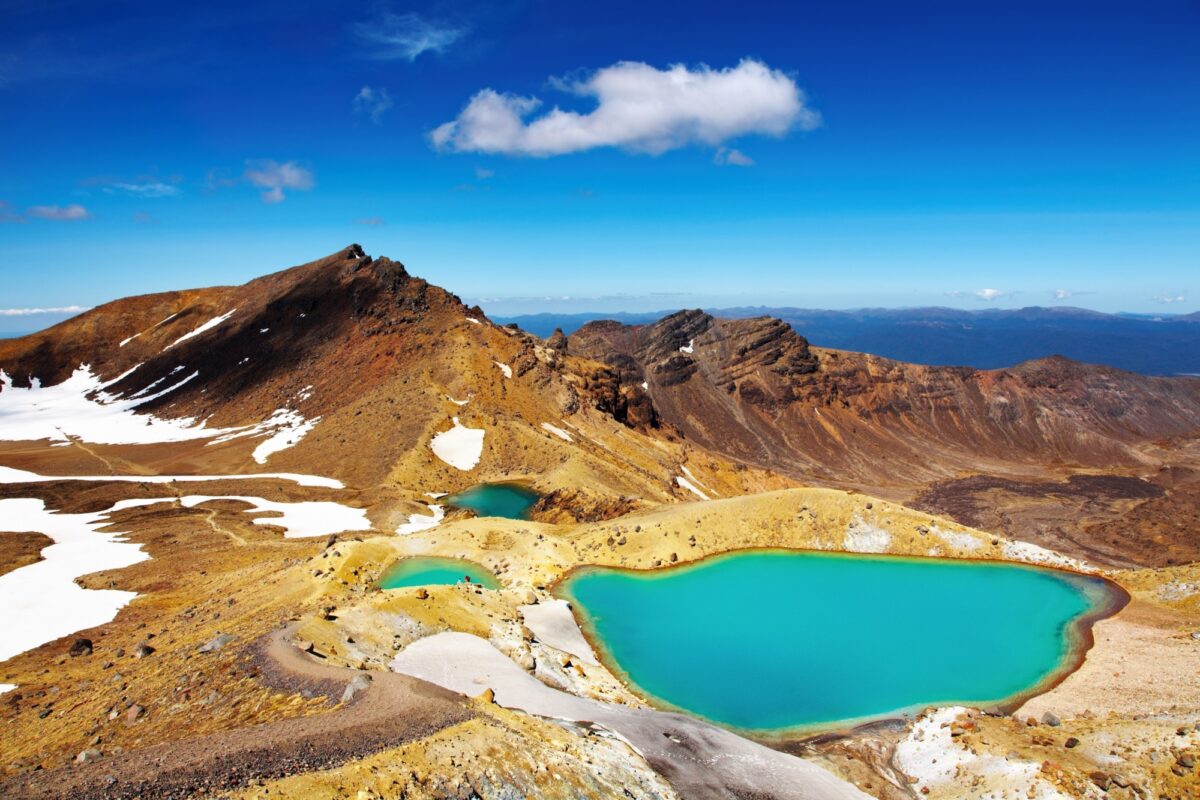
View of the Emerald and Blue Lakes on the Tongariro Alpine Crossing, North Island
Hike the Tongariro Alpine Crossing
The Tongariro Alpine Crossing is one of New Zealand’s greatest day walks. This is a world-renowned 19.4km hike across spectacular landscapes, including two active volcanoes in Te Maari Crater and Red Crater.
The trail will lead you through bright turquoise crater lakes, (sulphur-heavy and swimming is not an option) lush alpine meadows, scree-dense and towering volcanic peaks to a final stunning 360-degree view of the central plateau.
The Tongariro Alpine Crossing is a world-class hike, but not for the faint-hearted. Pay close attention to the weather forecast for the day you’d like to hike, as the weather can change quickly. The trail has
Very few water sources once you leave the starting gates, so bring at least three litres of water with you for the climb.
In high summer, it’s recommended to skip the climb on the hottest days — with hardly any shade along the volcanic crater, it’s harsh terrain in scorching temperatures. Similarly, in winter fog, mist and snow can make the trail extra-challenging, particularly along the steep 1,600m high ascent of the Devil’s Staircase. In this part of the world, where the weather can change fast, don’t be afraid to ask local guides for advice and check in with Tongariro Visitor Centre for their predictions on the hike conditions.
If you’re looking to experience the Tongariro Crossing but would prefer something shorter, there are easier hikes that leave from nearby Chateau Tongariro Hotel, but still take in some of the stunning scenery of the area.
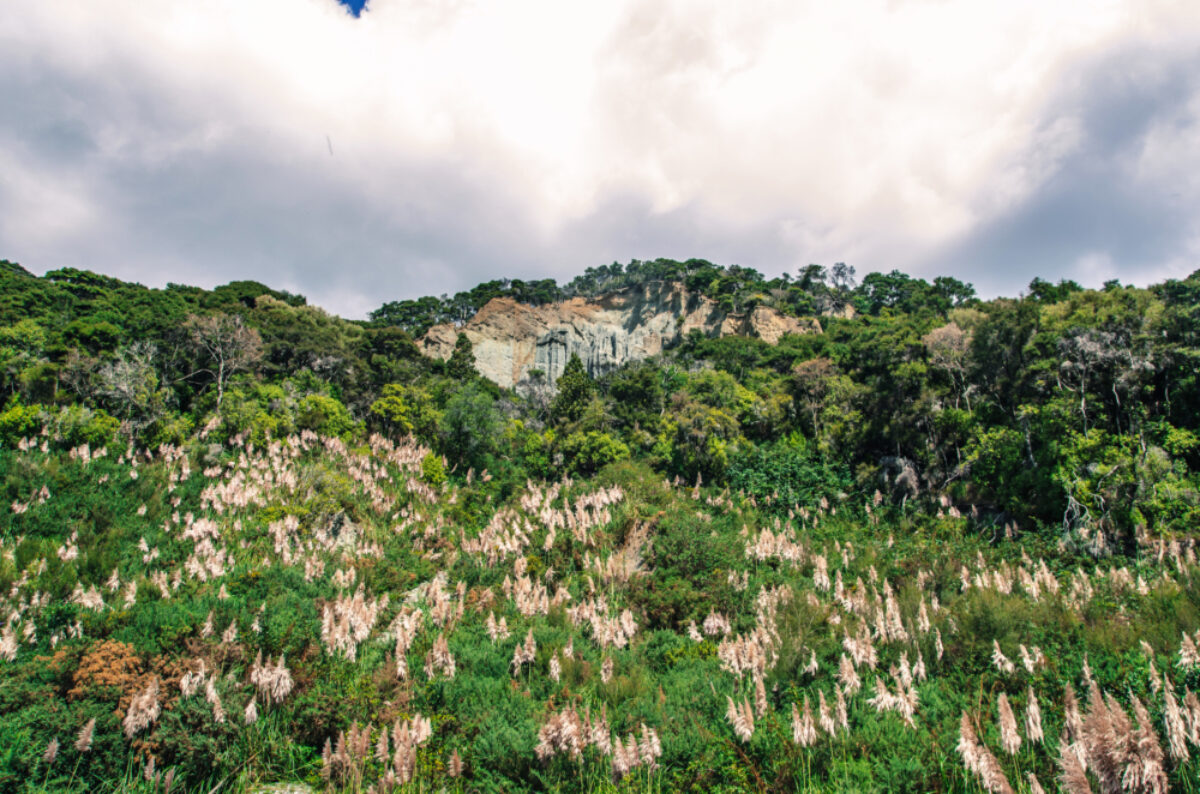
Putangirua Pinnacles, Wairarapa, North Island
How to see the Putangirua Pinnacles
For a much shorter hiking experience, head to the Putangirua Pinnacles in Wairarapa near Wellington. This 4km walk, known simply as ‘The Pinnacles’, is famous for its starring role in The Lord of the Rings Trilogy — it acts as the backdrop for the eerie Army of the Dead scenes in The Return of the King.
As you wander through the dense bush, the walk takes you right into the Putangirua Pinnacles — towering stalagmites rising tens of metres into the air. Formed over the last 120,000 years, the stalagmites are an eerie spectacle.
While it’s a short and sweet walk (about 2-3 hours round trip) to The Pinnacles, you’ll still get to see excellent views of Palliser Bay and Lake Onoke, and maybe even a peep of the South Island in the distance.
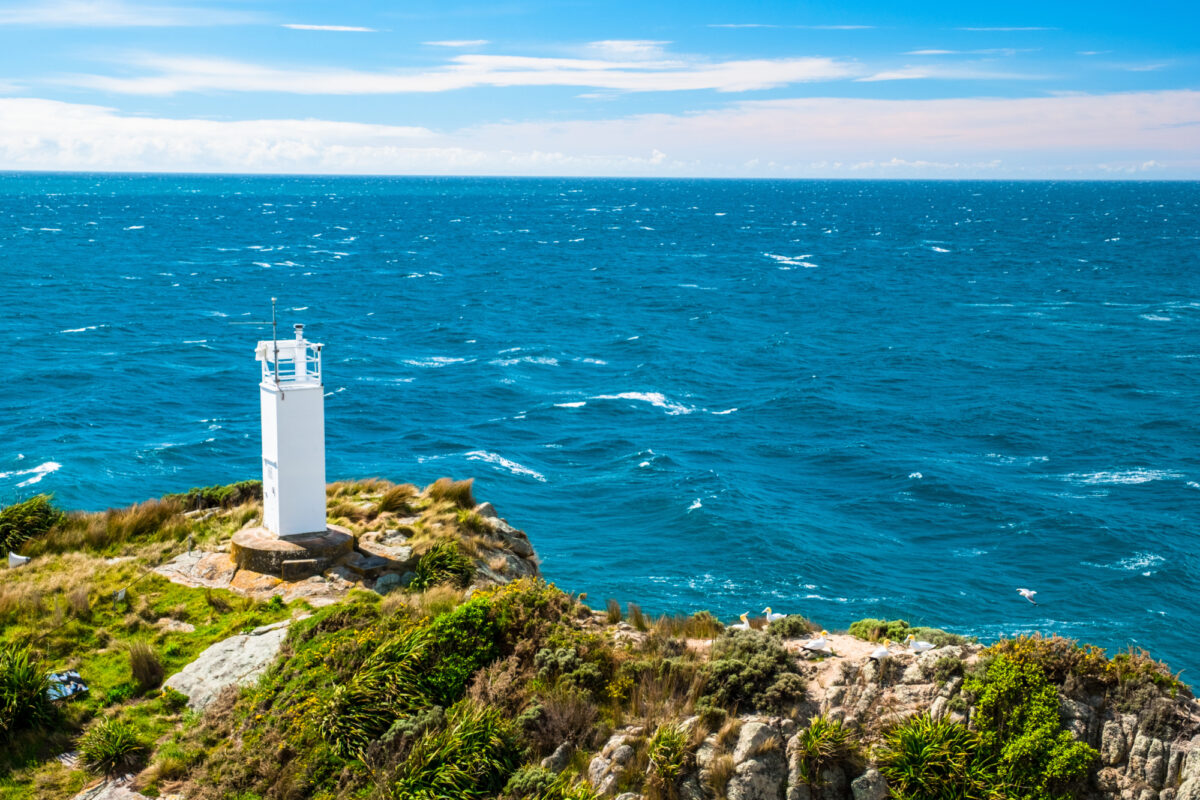
The lighthouse at Separation point, Abel Tasman coastal walk, South Island
Abel Tasman coastal walk
The Abel Tasman coastal walk is perfect for those who want to match ocean views with lush bushland. Extending from Marahau in the south to Wainui in the north, the 60km trail takes most hikers between 3-5 days to complete. Hikers can choose between four huts (Anchorage, Bark Bay and Awaroa) and 18 campsites along the Abel Tasman Coast Track to set up camp. However, every night’s accommodation must be booked in advance (all year round). If you arrive at a campsite or hut without a valid booking — or try to stay at a different site to the one you’ve booked, you can be charged a penalty fee, or even be asked to leave the park.
While making your way along the trail, you can picnic on the golden sandy beaches of Abel Tasman and rest tired legs at the Cleopatra's Pool — a natural rockpool with a moss-lined waterslide that’s a welcome landmark on the trail.
There’s one tidal crossing to navigate — the Torrent Bay estuary, which can be crossed within two hours of low tide. It’s worth consulting a tidal timetable to make sure your trip isn’t delayed. Don’t worry if you get your times wrong, as there is a separate track you can take if you get caught by the tide. However, it takes two hours to walk compared with the 25-minute estuary crossing.
Look out for the walk across the 47m suspension bridge at the Falls River inlet, where you can see playful fur seals sunbathing on the shores.
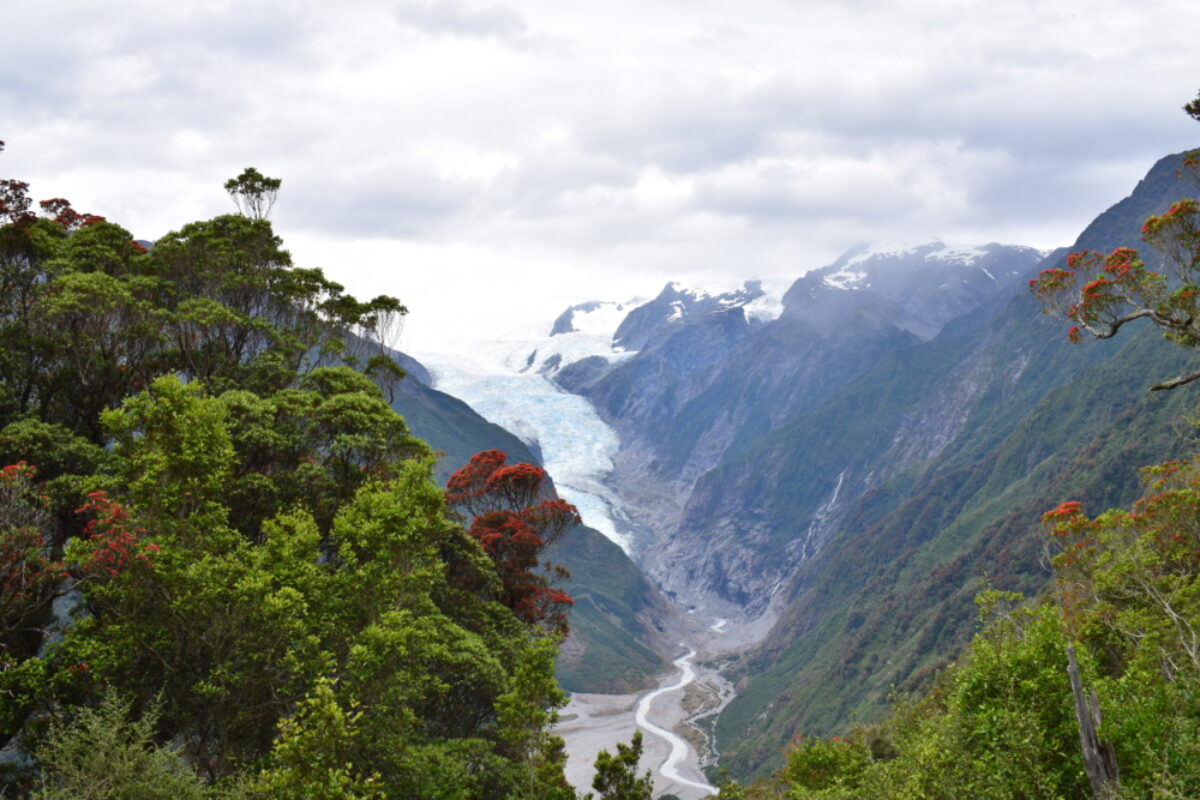
View of Franz Josef Glacier on the hike to Alex Knob viewpoint, South Island
Fox and Franz glacier hike
For icier adventures, head south-west to the Fox and Franz Josef glaciers, which are 25 minutes’ drive apart. Set over 13km, Fox glacier starts more than 2,600m high in the Southern Alps before plummeting down to the ocean. The ice is some 300m thick in places, melting into the freezing waters that feed the Tasman Sea. Fox is the more challenging glacier to trek on, with Franz Josef offering shorter walks.
You can set foot on the glaciers through a guided ice walk or on a heli-hike experience, where you’ll be dropped (and later picked up) by helicopter to explore the white landscapes of the glaciers.
After a safety briefing on land, your glacier exploration starts at the helicopter landing site — as the glacier is constantly moving and changing, the site can be different every few months but is always remote and exceptionally beautiful at about 800m above sea level.
At this stage, it’s time to don your crampons that are specially designed for icy conditions — don’t worry if you feel like Bambi on ice skates, you’ll soon start to get accustomed to the extra weight on your feet and you’ll confidently start to explore the glacial terrain.
From here, you’ll hike across the icy glacier. Your guides will examine and cut away new routes each day, so expect each hike to be different but you’ll see ice arches, crevasses, caves and moulins (sinkholes formed by surface water) over the two-hour hike. Before jumping aboard the helicopter for your return journey, take in the sights of Victoria Falls — the river formed from meltwater at the hidden Victoria Glacier. You can even fill your water bottle from the purest water source in the country.
Neighbouring Franz Josef Glacier offers a similar experience, with the option to take on a Glacier Valley Walk (a low-effort way to take in the glacier views) which will take you to the Waiho River bed, and you can follow the glacier's receding path along the incredible landscape. You'll also be able to take in the glacier's history (which sadly sees it decrease in size, year on year) and learn of the Maori legend of Kā Roimata o Hine Hukatere — the Maori name for the Franz Josef glacier and a tragic story of lost love.

Glenorchy wharf wooden pier, South Island
Horse riding at Glenorchy
The area of Glenorchy, just an hours’ drive south from adventure capital Queenstown is a horse riders’ dream location. No previous experience is necessary and beginner rides take you along the stunning Dart Valley. Along the way, riders take in the scenery at the head of Lake Whakatipu, the epic gateway to Mount Aspiring National Park and Te Wahipounamu, one of New Zealand’s three World Heritage sites.
Beginners are paired with gentle giants and take on a meandering trail along the Dart River and some slightly more tricky river crossing.
If you have riding experience, a day-long or overnight horse riding experience in Glenorchy can be arranged. With the Queenstown Basin as a backyard, you can explore over 100,000 acres of pristine New Zealand backcountry. From crossing glacial-fed rivers, slow-climbing the side of a mountain range to galloping through bush trails and ancient beech forests, a horse-riding tour allows you to see a different side of New Zealand.
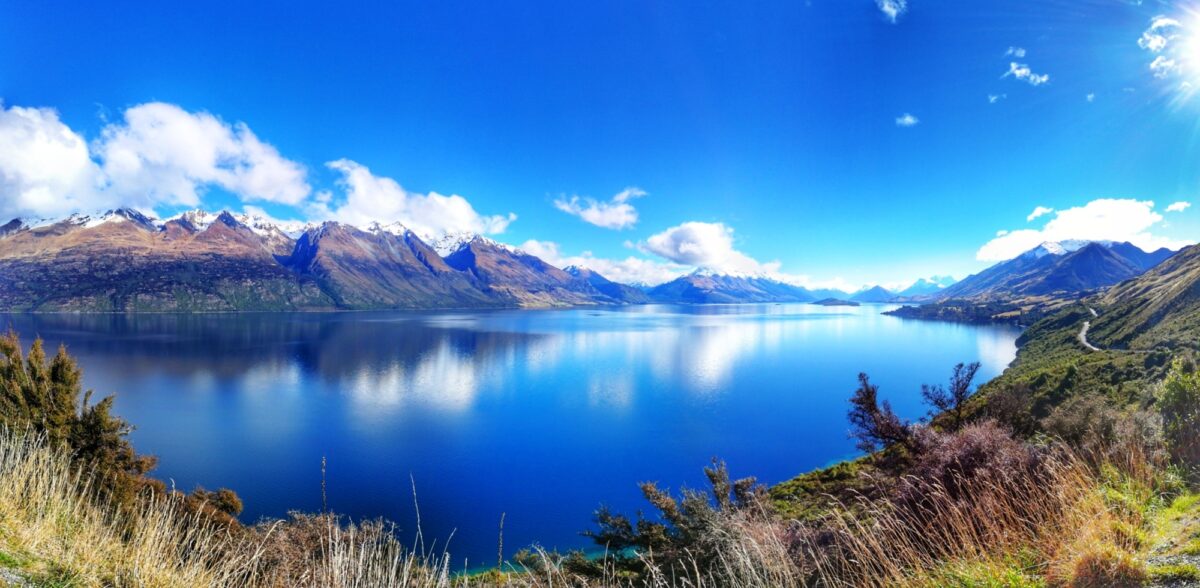
View of Lake Wakatipu from Queenstown towards Glenorchy, South Island
Your adventure base camp: Queenstown
Queenstown is known as the adventure capital of the world, so if you’re setting up base camp in the South Island, get ready to experience all the adrenaline-pumped activities Queenstown has to offer.
- Nevis Bungee 134m high with 8.5 seconds of freefall, it’s New Zealand's highest bungee jump
- Skydive from 15,000ft (60 seconds of freefall at 200mph) over Queenstown with New Zealand’s first tandem skydive operation
- Jet boating on Skippers Canyon through the narrowest canyons on the Shotover River
- Arrow River 4x4 off-road adventure taking on the old miners' wagon trail and exploring the historic gold mining town of Macetown
- Queenstown Bike Park with 450m of vertical descent, incredible views and 27 trails of varied terrain






